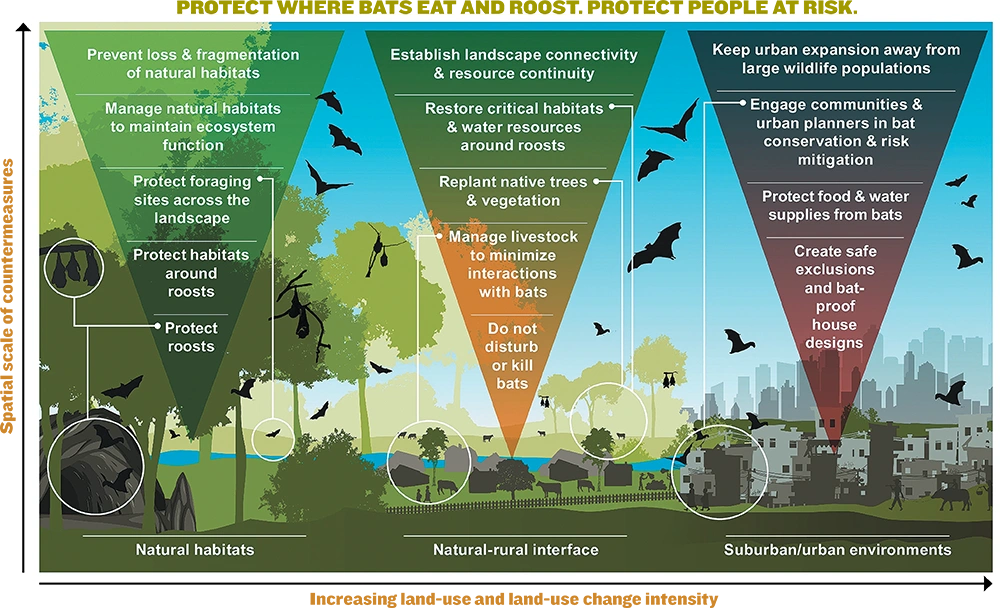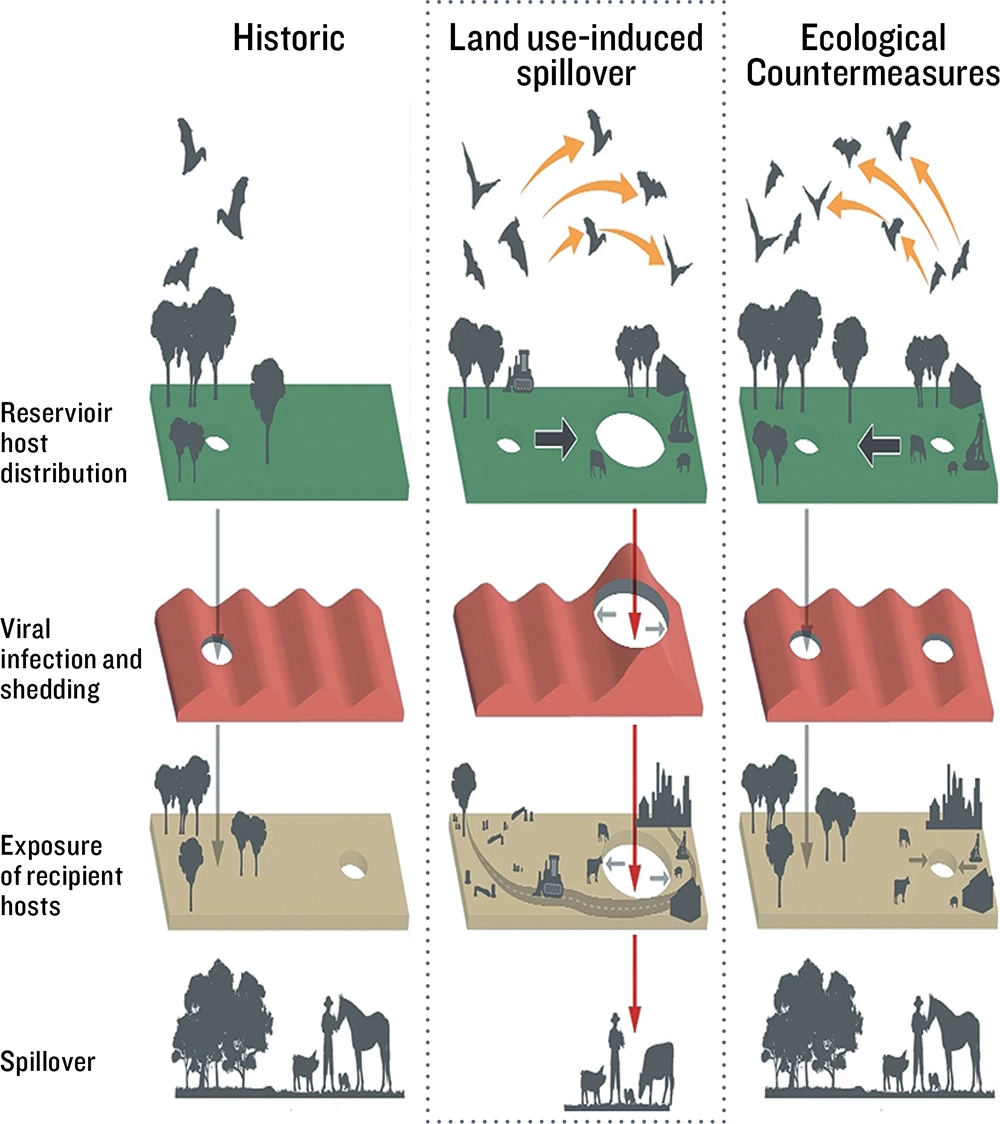Bat Signals
batsignals

Ecological Countermeasures to Prevent Pandemics


The authors propose ecological intervention as the best strategy to prevent the next pandemic. They discuss how proactive policies, including integrated ecological approaches to be used alongside medical responses, are needed to develop a comprehensive pandemic prevention strategy.
Some of the ecological approaches they name include protecting intact ecosystems and habitat, avoiding land use changes, curbing the trade of bats, and using responsible practices when humans and wildlife share space.
A Voice for Bats

Frick represents BCI and GBatNet on CMS’s Energy Task Force, working to reduce the threats that renewable energy development poses to migratory species. At the Samarkand meeting, Frick also made a floor statement in support of a proposed action to protect the African straw-colored fruit bat (Eidolon helvum). This migratory species crosses Africa to congregate at a national park in Zambia each year and is threatened by development.
Leaf Shave Helps Boost Bats

“Each year, our team selects a nonprofit organization to support during Earth Month,” says Brooke Foley, a member of Leaf Shave’s marketing team. “This year, we chose to support Bat Conservation International because bats need our help. We hope to shed light on important ecological issues and work to educate about bats and the work of BCI, as well as inspire others to get involved, volunteer, and spread awareness.”
Girl Scout Power
Hopkins was inspired to coordinate the Bat Chat webinar after she saw a similar webinar last year, so she and her mom reached out to BCI. Hopkins recorded a short video message about the importance of bats and introduced Lear, a Girl Scout Lifetime Member. Hopkins, a dedicated bat enthusiast, worked with her school’s “Green Team” to share a bat fact over the public address system at her school every day in April. The webinar encouraged greater awareness, and was attended by several organizations with connections to Hopkins’s Girl Scout Troop, including schools and universities. Watch BCI webinars at youtube.com/@BatConservation/videos.
Experience Bats
The new feature on BCI’s website focuses on ways people can enjoy the world’s 1,400-plus bat species in person or virtually, featuring more than 30 global bat-viewing destinations to enjoy. Visit U.S. sites like Alabama’s Sauta Cave—where you can see hundreds of thousands of gray bats—or venture to a ghost-town mine in Colorado that is home to a quarter million bats. Travel to Pemba Island in Tanzania to see mega-size flying foxes, see Monfort Bat Cave’s two million fruit bats in the Philippines, or visit Naracoorte, Australia’s largest breeding colony of Southern bentwing bats.